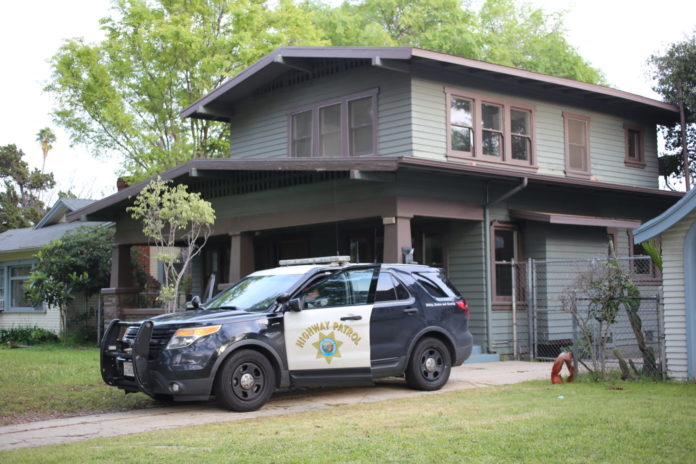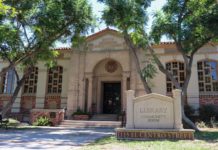
UDPATED 7-19-2021:
After nearly six months, Caltrans has yet to respond to a dozen public and private housing developers who answered the agency’s request for ideas on how to deal with 47 properties it owns in the former SR-710 extension corridor in El Sereno. Some attribute the glacial response to the realities of state bureaucracy, but others say it’s a sorry performance for an agency that in January told California Transportation Commissioners it is “vigorously reviewing options to expedite the disposal of the properties.”
Last December, Caltrans and two other agencies jointly released a “request for interest” (RFI) concerning an “affordable housing development opportunity” in Los Angeles. The properties include 13 vacant lots and 34 aging, “uninhabitable” structures –14 single family homes and 20 multi-family residential buildings. Eight are on the 4200 block of Maycrest Ave; eight on Sheffield Ave; seven on the 5400 block of Huntington Dr; four on Lowell Ave; three on Concord Ave; and one each on Alan, Keats, Almont and Alpha Streets.
The RFI sought “ideas about how these sites can be developed while meeting state and local goals.”
“There is a demand from the community to put these dilapidated homes to good use,” it said. “However, there is not a consensus in how these properties may best serve the greater Los Angeles community as well as the current residents of El Sereno.” It therefore sought “creative, locally driven and locally supported ideas that will help the community, local and State partners chart a path forward on the best future use of these properties.”
The RFI was sent to 350 public and private development organizations. By the Feb. 5, 2021, deadline, twelve responded: Beacon Rose Partners; East to West Development Corp; the Housing Development Corp. of Monterey County; the WIN Project; New Economics for Women; Wesley Health Centers JWCH Institute; El Sereno Florence/Flourish El Sereno; El Sereno Bungalows Collective; H.O.M.E; Clifford Beers Housing; Habitat for Humanity and a pair of developers named Dylan Gasperik and Ebberly Strathairn.
The three agencies behind the RFI — Caltrans, the Department of General Services (DGS) and the Department of Housing and Community Development (HCD) — organized a multi-agency panel of reviewers who during spring remotely interviewed all the applicants.
Then nothing. Months went by, but still nothing.
The primary contact for the RFI is Joshua Palmer who serves on the DGS team implementing the Governor’s executive order to develop affordable housing on excess state land.
Palmer did not return a media inquiry. A DGS spokesperson said the agency had “done no outreach” on the RFI and deferred to Caltrans, whose spokesperson in turn said “DGS needs to answer because it is their program.” In response to a follow up inquiry, the DGS spokesperson said, “we are collaborating with Caltrans on next steps,” but offered no other details.
● The Burbank-based East to West Development Corporation, a non-profit affordable housing developer with a mission “to provide affordable housing in the most challenging markets,” received the RFI, surveyed the houses, studied the zoning and the neighborhood, and proposed a plan to construct and rehab the single-family houses, find income-eligible buyers, and ensure covenants guaranteeing a 30-year affordability period, as well as using vacant lots to locate small, prefabricated modular units.
In March, EWD’s founder and CEO, Daniel Rosemond, a former city manager, was interviewed by the RFI panel. Since then — crickets. Looking to be “persistent but not nagging,” Rosemond this month emailed Palmer to ask how the review was coming along but was told no decision had been made. “If they went through the effort to prepare the RFI, assemble a committee to formally evaluate the proposals and provide that analysis to the power that be, I would assume something would have happened,” he told the South Pasadenan News.
“I don’t know if this is normal,” Rosemond added. EWD has not previously worked with the state, “but I can tell you the longer a property sits idle in a deteriorating state, the more expensive the rehab will be.”
Beyond the cost of the rehab is security. Rosemond said when he surveyed the properties, he saw that Highway Patrol agents were watching over the structures, “which seemed pretty expensive.”
This month, Caltrans confirmed with The South Pasadenan a Fox 11 report that during the six months ending last May, it spent $13 million to cover CHP and private security to guard the 120 properties in the 710 corridor. That’s equal to the estimated sales price of 25 of the rehabbed homes under the EWD proposal.
● Habitat for Humanity of Los Angeles filed a proposal for 19 of the properties, both vacant and single-family homes, saying it would “leverage its financial lines of credit, construction loans, developer equity, and defer its developer’s fee to assist in the financing of this proposal” which includes building new homes, preserving and enhancing existing houses through rehabilitation “and, when possible, building a new accessory dwelling unit.”
But Habitat LA’s Darrell Simien said since its interview with the multi-agency panel, “we have not heard anything.” To Simien, “it’s just typical of the state. We deal with a lot of jurisdictions and when you develop affordable housing, things go fast or take forever.”
● Housing Development Corp. of Salinas, CA, which has developed 1,355 units through demolition, new construction, or rehabilitation, filed a proposal based on its model of partnering with local housing authorities to develop properties “through a variety of financing vehicles including 9 percent tax credits, and project-based Section 8 for special populations such as large families, seniors and disabled populations.”
Sandra Reeder, a housing development consultant who filed the proposal on behalf of HDC, said the application “was a waste of time. They don’t seem to really understand what they want. They understand tax credits, but they don’t get back to you. Nothing comes of it.”
Reeder said she was interviewed and spoke with Palmer several times but has heard nothing. “Maybe the state is in chaos. I personally think that is what it is.” She said the response is akin to that of the related program HCD is running under the 2019 local lands inventory act (AB-1255) to utilize surplus state land for affordable housing. But she said the program simply creates a raft of unwanted paperwork for government jurisdictions who must produce inventories of available land and seek interested parties through notices. But once an interested party files a response, “they don’t get back to you.”
● The non-profit WIN Project, with 20 years’ experience developing “high impact affordable and general housing” projects in urban areas, submitted concept plans for about half the properties, all of which would end up owned or rented by people with below-median income. “We are not asking for money,” WIN director Regina Young told the South Pasadenan News. “We can come up with our own financing,”
Young said she was interviewed by the panel about five months ago and was told someone would get in touch. “Our expectation was that they would come up with something right away because there is a housing crisis out there.” She’s called Palmer but been repeatedly told “they still haven’t made a decision.”
WIN is looking at other projects and needs an answer. She said she gets solicitations “all the time” about properties from other cities and counties under the Surplus Land Act, “but for this project I don’t see it moving like that. I didn’t hear, ‘No, you are not qualified,’ or ‘Yes, we’ll think about it.’” Just silence.
The RFI is not the only 710 corridor surplus property disposal program in which Caltrans has underperformed. Using the Affordable Sales Program set up under the Roberti Act, Caltrans made its Phase 1 offer to sell 42 properties in 2016. To date, 10 properties have been approved for sale. Phase II, which was scheduled to conclude in 2020, has yet to get under way. Caltrans has been sued twice over the rules it adopted for the ASP. It adopted interim emergency rules that expired in 2019.
“Caltrans is working to update the regulations to allow sales to continue and to address lessons learned,” spokesman Eric Menjivar said this month. But once a new permanent rule is announced, the formal adoption process “can take more than one year and is subject to litigation,” he added.
Also impeding development of the new rules are bills pending in the state legislature, which could materially affect their provisions. Sen. Maria Durazo’s SB 51, encouraging the sale of Caltrans owned houses in El Sereno, was approved by both houses and is on its way to the Governor. Sen. Anthony Portantino’s SB 381, enabling the sale of Caltrans property in South Pasadena to that city, was approved by the Senate and awaits action in the Assembly Appropriations Committee. Sen Chris Ward’s AB 950, allowing Caltrans to sell surplus property to a city or county that agrees to use it for emergency or affordable housing, has passed the Assembly and awaits action in the Senate Appropriations Committee.
Meantime, under what Caltrans District 7 Director Tony Tavares at the January CTC meeting called the agency’s “commitment to being an active partner in dealing with the homeless crisis,” Caltrans worked out a deal with the Housing Authority of the City of Los Angeles to lease 26 vacant properties in El Sereno for the city’s transitional and emergency housing program. A memo prepared by Caltrans staff said the program was created “due to the immediate need” for shelter and housing in the state.
Neither Tavares nor the memo mentioned the deal was actually put together in response to pressure brought by the LA Reclaimers, a group of unhoused individuals and families who, as the pandemic got under way last year, illegally occupied 13 of the empty homes. Under the deal with HACLA, the Reclaimers were allowed to live in them legally. HACLA reports that the 13 Reclaimers recently began their second year of tenancy under the deal, as have non-Reclaimers approved for seven of the properties. Six of the units made available under the program, however, remain unoccupied.
Dealing with housing “is not our forte,” Tavares readily conceded at the January 28 CTC meeting. He noted that even after six decades as a major landlord over low-end residential properties, the department still has “no housing or social service resource group.” While reporting on the status of its housing programs, he also maintained that some options are not feasible — such as transferring the properties to HCD, or DGS, the later of which, in addition to having a real estate office, may well be “more adept at dealing with housing and these types of fixed properties.”
CTC executive director Mitch Weiss noted that in addition to likely being better suited to dispose of surplus state property, DGS is currently running the program under AB-1255, which is aimed at doing just that.
“Perhaps we can start exploring a different path forward,” Weiss suggested.
“And, we would welcome an exit strategy,” Tavares replied.




















.png)









